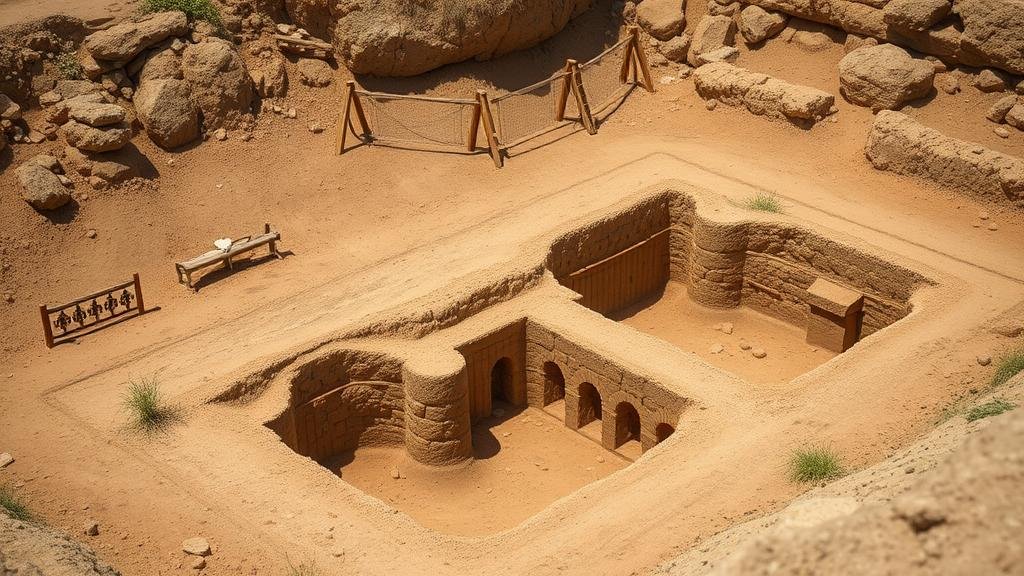Analyzing the potential of unexcavated archeological sites for future discoveries.
Analyzing the Potential of Unexcavated Archaeological Sites for Future Discoveries
The field of archaeology is an ever-evolving discipline, intrigued by the mysteries of our past hidden beneath layers of soil and time. While excavated sites have offered invaluable insights into ancient civilizations, a significant portion of archaeological heritage remains buried and unexplored. This article aims to analyze the potential of unexcavated archaeological sites, considering their significance and the methods that could lead to future discoveries.
The Importance of Unexcavated Sites
Unexcavated archaeological sites are crucial for several reasons:
- Preservation of Context: Excavated sites often lose the stratigraphic context that provides critical information regarding the relationships of artifacts and features. Unexcavated sites retain this context, offering a clearer picture of historical events.
- Potential for New Discoveries: These sites may harbor artifacts or structures that could redefine our understanding of a particular civilization. For example, in 2008, the use of ground-penetrating radar in an unexcavated area of the ancient Maya city of Tikal, Guatemala, revealed previously unknown structures.
- Resource Management: Unexcavated sites provide insights into sustainability practices of ancient societies, highlighting how they managed resources in their environments.
Current State of Unexcavated Sites
Recent statistics indicate that over 90% of eligible archaeological sites remain unexcavated. In regions like the Middle East, Latin America, and East Asia, looming threats from urban development, climate change, and looting further underscore their significance.
For example, in Italy, the archaeological site of Pompeii has seen extensive excavations while other nearby villas and settlements remain buried. As reported by the Italian Ministry of Cultural Heritage, several of these unexcavated sites may contain artifacts that are stylistically or functionally distinct from those found in Pompeii, providing broader insights into the daily lives of ancient Romans.
Technological Advances in Archaeology
New technologies have revolutionized the way archaeologists approach unexcavated sites. Techniques such as:
- Ground-Penetrating Radar (GPR): This non-invasive method utilizes radar pulses to image the subsurface. GPR has successfully been applied in sites like the Roman port of Portus, near Rome, where archaeologists identified hidden structures without digging.
- LIDAR (Light Detection and Ranging): LIDAR systems can map terrain, identifying vegetation and providing detailed topographical data. In Central America, it uncovered an extensive network of Mayan cities previously hidden beneath the jungle canopy.
- Drone Technology: Drones equipped with infrared sensors or high-definition cameras can survey large areas quickly, enabling researchers to detect anomalies that may signify archaeological features.
Case Studies of Unexcavated Sites
There are numerous compelling case studies highlighting the potential of unexcavated archaeological sites:
- The Lost City of the Monkey God: In Honduras, advancements in LIDAR revealed a sprawling urban complex hidden within the Mosquitia rainforest, leading to expeditions that uncovered artifacts dating back to the 14th century.
- The Burial Mounds of Eurasia: Sites in Russia and Ukraine, including the Scythian mounds, suggest complex societal structures. Advances in remote sensing are expected to uncover further burial sites and their associated artifacts.
Challenges and Future Considerations
Despite the promising potential of unexcavated archaeological sites, several challenges persist:
- Funding and Resources: The financial resources required for advanced technologies and subsequent research can be substantial, often limiting the scope of explorations.
- Legal and Ethical Considerations: Archaeological work must adhere to local laws and ethical standards, which can complicate access to certain sites.
- Climate Change: Natural disasters and environmental changes threaten the integrity of numerous unexcavated sites, making immediate studies imperative.
Addressing these challenges requires collaborations between governments, NGOs, and academic institutions to ensure that the potential of unexcavated archaeological sites is maximally realized.
Conclusion
The unexcavated archaeological sites of our world hold secrets and legacies that, when unveiled, can significantly enhance our understanding of human history. Employing advanced technologies and interdisciplinary approaches not only preserves the past but enriches our connection with it. As stewards of this knowledge, it is essential to advocate for the protection and study of these sites, ensuring they contribute their stories to future generations.
Actionable Takeaway: Support archaeological initiatives and educational programs that focus on the exploration of unexcavated sites. Engaging with local communities can bolster resources and foster a shared commitment to preserving our cultural heritage.



